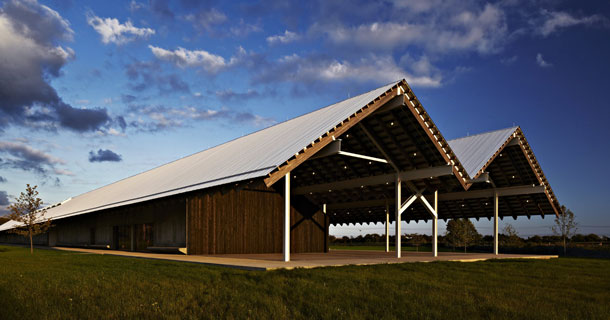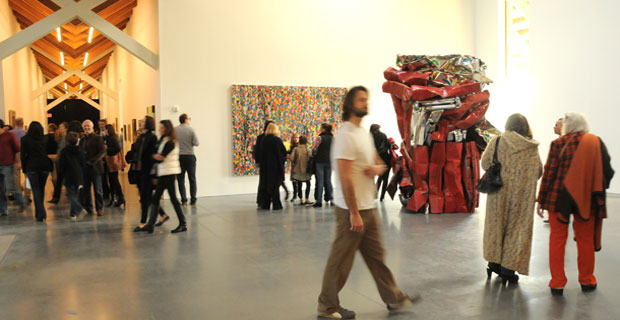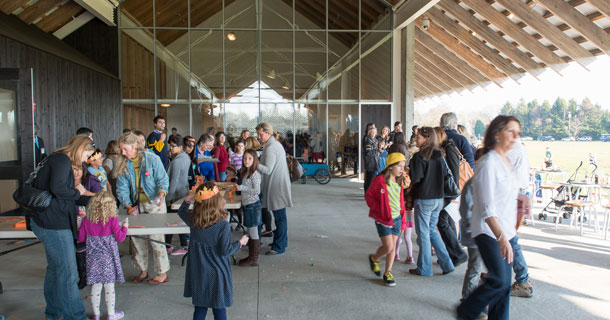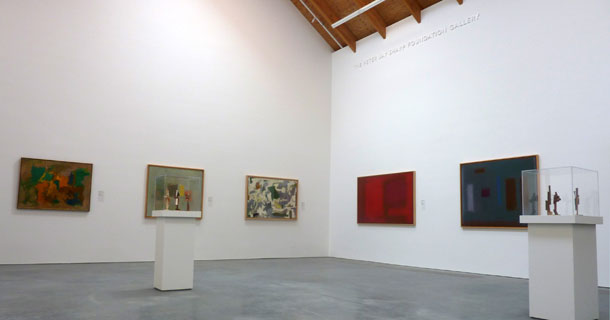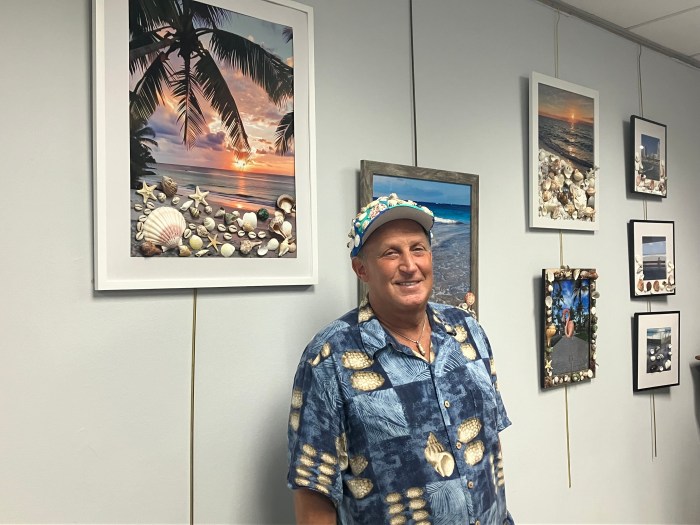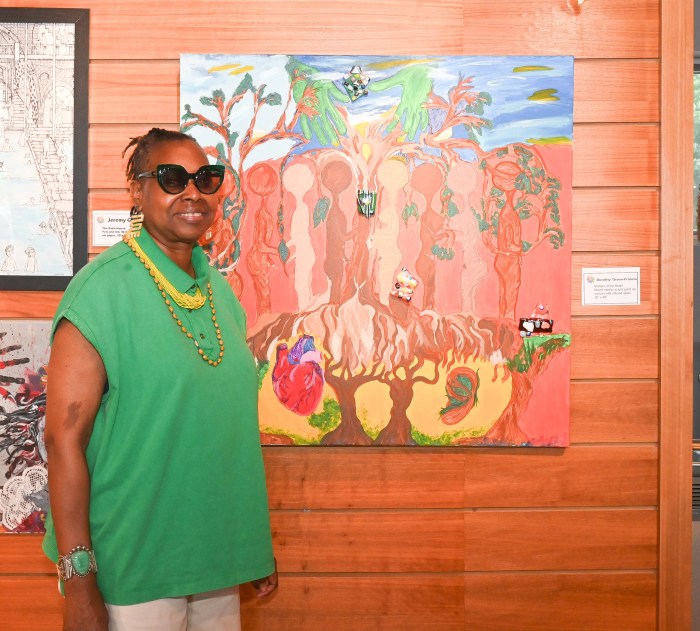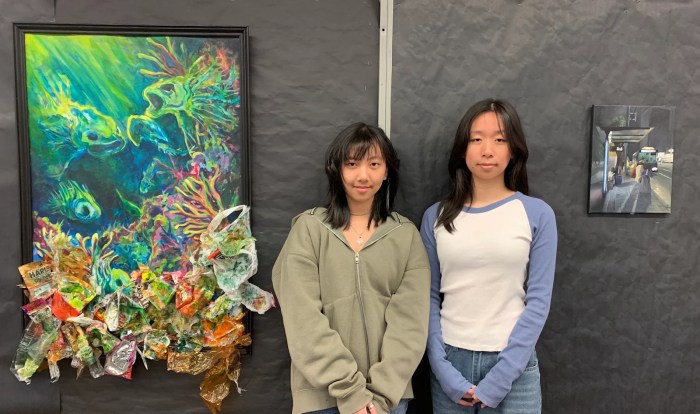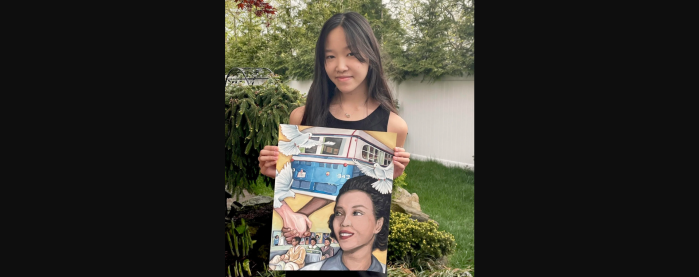Potato barns inspired the abstract look of the new Parrish Art Museum, the elongated structure with the twin white roofs and pale gray concrete walls sprouting from a field near the Duck Walk Vineyards in Water Mill. The museum, which officially opened in November, could soon blossom into a global destination for contemporary art on the East End.
“After a few months of operation, everyone will know where we are!” says museum director Terrie Sultan, a sprightly, energetic woman with short-cropped hair and large, luminous eyes, who’s been a curator of contemporary art at the prestigious Corcoran Gallery of Art in Washington, D.C., and the director of the Blaffer Art Museum at the University of Houston.
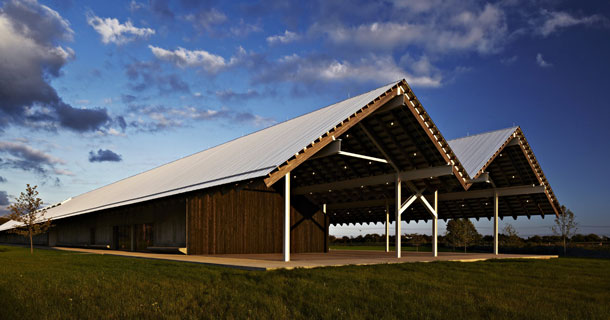
(All photos courtesy of Parrish Art Museum)
At the Parrish, Sultan is busy overseeing preparations for February’s “Family Month,” highlighted by its student art show, which runs from Feb. 2 to March 3 and features work from public and private schools in Riverhead, Southampton, East Hampton, Southold and Brookhaven. An annual tradition, it began when the museum occupied a much smaller, although more ornate building on Jobs Lane in the Village of Southampton. Samuel Longstreth Parrish, a Philadelphia-born, Harvard-educated successful New York lawyer, had built it in 1898 to house his collection of Italian Renaissance paintings and plaster casts of classic sculptures.
“His love of Italian art transformed his life,” says Sultan.
Parrish wanted his museum to both educate and edify the public. But after he died, the Great Depression hit hard and his heirs could not keep it going, so they gave the building and his collection to the village. The Art Gallery of Southampton, as it was known, languished under benign neglect until the 1950s when the village trustees turned for help to a prominent civic-minded resident, Rebecca Bolling Littlejohn, a very important collector of American art who was then in her 80s.
“In a way, they got more than they bargained for,” says Sultan, because Littlejohn changed the focus of the museum, eventually donating 300 pieces from her own collection. “She felt—and rightly so—that the mission and goals of this institution should be more located in the creativity in the area where we are.”
But the problem with the Jobs Lane location was always its limited space, some 17,000 square feet—so there was never room to show more than a smattering of its permanent collection, which now numbers 2,700 pieces. The museum’s plans to expand met with local resistance and so the board decided to move.
After the 14-acre site in Water Mill was bought in 2005, plans were in place for a cluster of connected art studios that, all told, would cost more than $80 million to construct. But then in 2008, the recession struck—just months after Sultan had taken the Parrish position. And so, like President Barack Obama, Sultan says, “The job I campaigned for is not the one I got.” But she found solace in a sentiment uttered by Obama’s fiery chief of staff (and now Chicago mayor) Rahm Emanuel, who famously said, “Never let a crisis go to waste.”
The total square footage was scaled back from 44,000-square feet to its present 34,000-square feet, and the new building wound up costing $26.2 million to complete.
“What changed is the envelope,” explains Sultan.
Instead of 64 exterior walls, now there are four, yet the basic materials from the more ambitious design—concrete, steel and glass—remain.
Making the structure reflect the “vernacular architecture of the area,” as Sultan described it, was one of the goals of the Swiss firm Herzog & de Meuron, who drew upon the “long potato barns” in the East End.
In many ways, the new Parrish is an amazing space, some 613 feet in length and almost 100 feet wide. At one end is a state-of-the-art theatre with movable seating to accommodate performances, lectures and presentations, plus a 6,000-square foot terrace off the café—perfect for warmer weather—with a view of the nearby vineyard. At the other end is an open office space for the museum staff with large picture windows. A long corridor, called the spine, runs down the middle of the museum, dividing the exhibit spaces, which have an abundance of skylights thanks to the double roofs overhead.
“We wanted a building that would make a statement but not get in the way of the art,” she says.
On a recent wintery day, the museum echoed with the laughter and voices of kids who’d come there on a field trip.
“Look at what they have access to!” exclaims Sultan, proudly. “They don’t have to get on a bus and go for two hours to the city to see great masterworks of art!”
The permanent collection spans the 19th century to the present. The museum is currently showcasing the works of William Merritt Chase, the American impressionist, and Eric Fischl, the realist painter. In an exhibit space called “Look Again” stands a large rectangular sculpture of crumpled red car fenders and molded shiny chrome done in 2010 by John Chamberlain, who had a studio on Shelter Island.
“This is a place that has inspired generations of creativity, not only in the visual arts,” says Sultan. “There’s a tremendous writers’ community out here, there’s a huge contingent of musicians—both classical and contemporary—there are film people, there are fashion people… So out here you have a community that is unlike any community in the world, and it all comes together with this incredible creativity. And we want to be a part of that!”
After the student art exhibit closes, the next special attraction will be a full-scale retrospective—from 1972 to the present—of drawings by Alice Aycock, a major contemporary American sculptor, whose work has been shown in museums and galleries around the world.
“She’s known as a sculptor but this woman can draw!” says Sultan with a broad smile.
Aycock’s show runs from April 21 to July 14; starting July 21 is an exhibit called “Angels, Demons and Savages: Pollock, Ossorio, Dubuffet,” running through Oct. 27.
The Parrish Art Museum is located at 279 Montauk Highway, Water Mill. For more information, call 631-283-2118 or visit www.parrishart.org.




